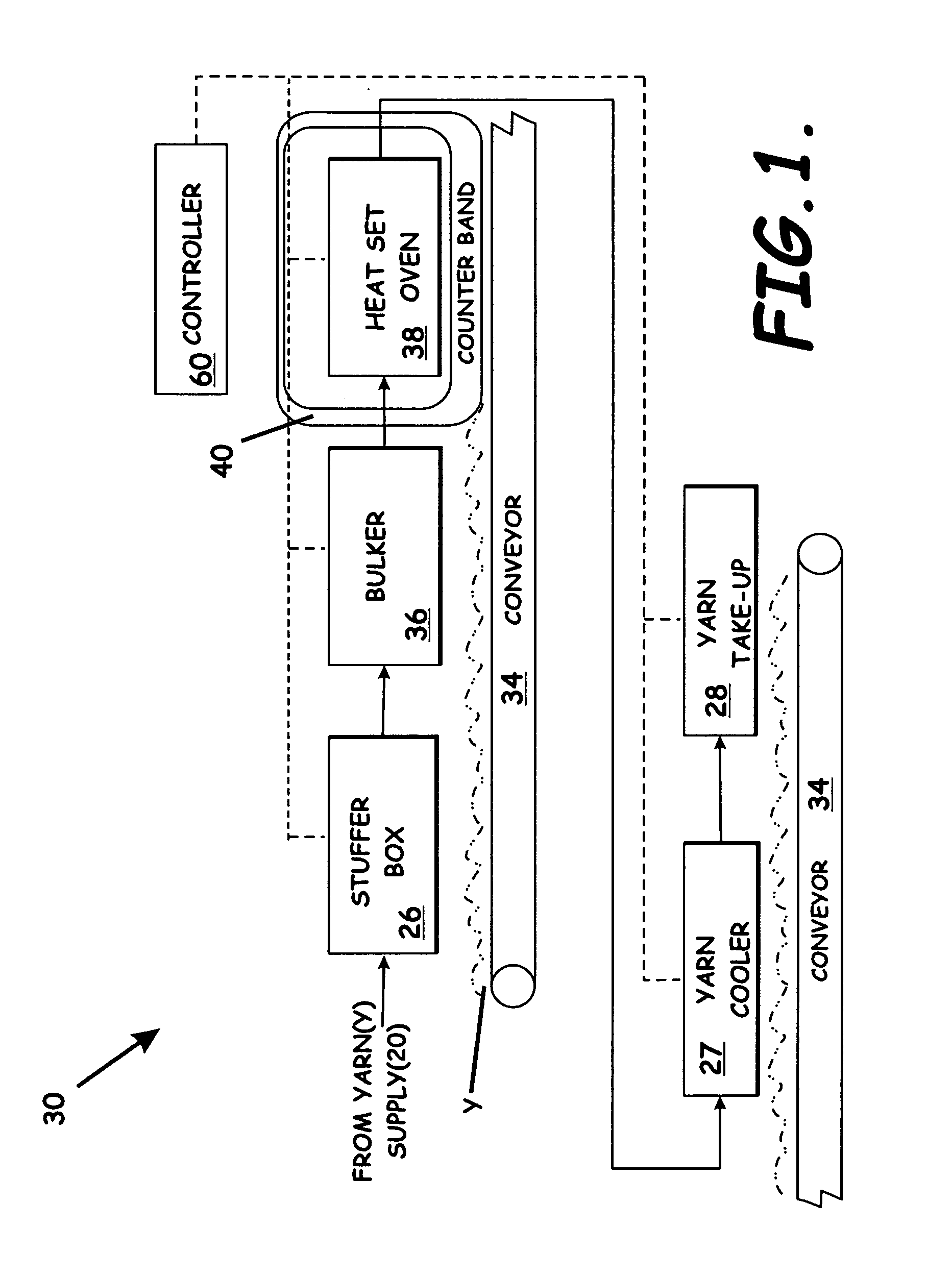System, apparatus, and method of reducing production loss having a counterband
a production loss and counterband technology, applied in the field of textile industry, can solve the problems of reducing the production efficiency of the entire system, counterband absorbance, moisture soaking, etc., and achieve the effects of reducing production losses, reducing production losses, and saving time, money and labor
- Summary
- Abstract
- Description
- Claims
- Application Information
AI Technical Summary
Benefits of technology
Problems solved by technology
Method used
Image
Examples
Embodiment Construction
[0052]The present invention now will be described more fully hereinafter with reference to the accompanying drawings in which illustrated embodiments of the invention are shown. This invention, however, may be embodied in many different forms and should not be construed as limited to the illustrated embodiment set forth herein; rather, these embodiment are provided so that this disclosure will be thorough and complete, and will fully convey the scope of the invention to those skilled in the art. Like numbers refer to like elements throughout.
[0053]FIGS. 1-4 illustrate an embodiment of a yarn system 30 to reduce the production loss in yarn Y and, particularly, in a high speed, continuous yarn production process. In one embodiment the system 30 includes a yarn supply 20 or yarn feed having yarn Y, e.g., untexturized yarn or tow, positioned thereon, a yarn guide 22 guidingly receiving a plurality of yarn strands therethrough, a yarn texturizer (e.g., draw rolls 25 and a stuffer box 26)...
PUM
| Property | Measurement | Unit |
|---|---|---|
| hydrophobic | aaaaa | aaaaa |
| temperature | aaaaa | aaaaa |
| width | aaaaa | aaaaa |
Abstract
Description
Claims
Application Information
 Login to View More
Login to View More - R&D
- Intellectual Property
- Life Sciences
- Materials
- Tech Scout
- Unparalleled Data Quality
- Higher Quality Content
- 60% Fewer Hallucinations
Browse by: Latest US Patents, China's latest patents, Technical Efficacy Thesaurus, Application Domain, Technology Topic, Popular Technical Reports.
© 2025 PatSnap. All rights reserved.Legal|Privacy policy|Modern Slavery Act Transparency Statement|Sitemap|About US| Contact US: help@patsnap.com



